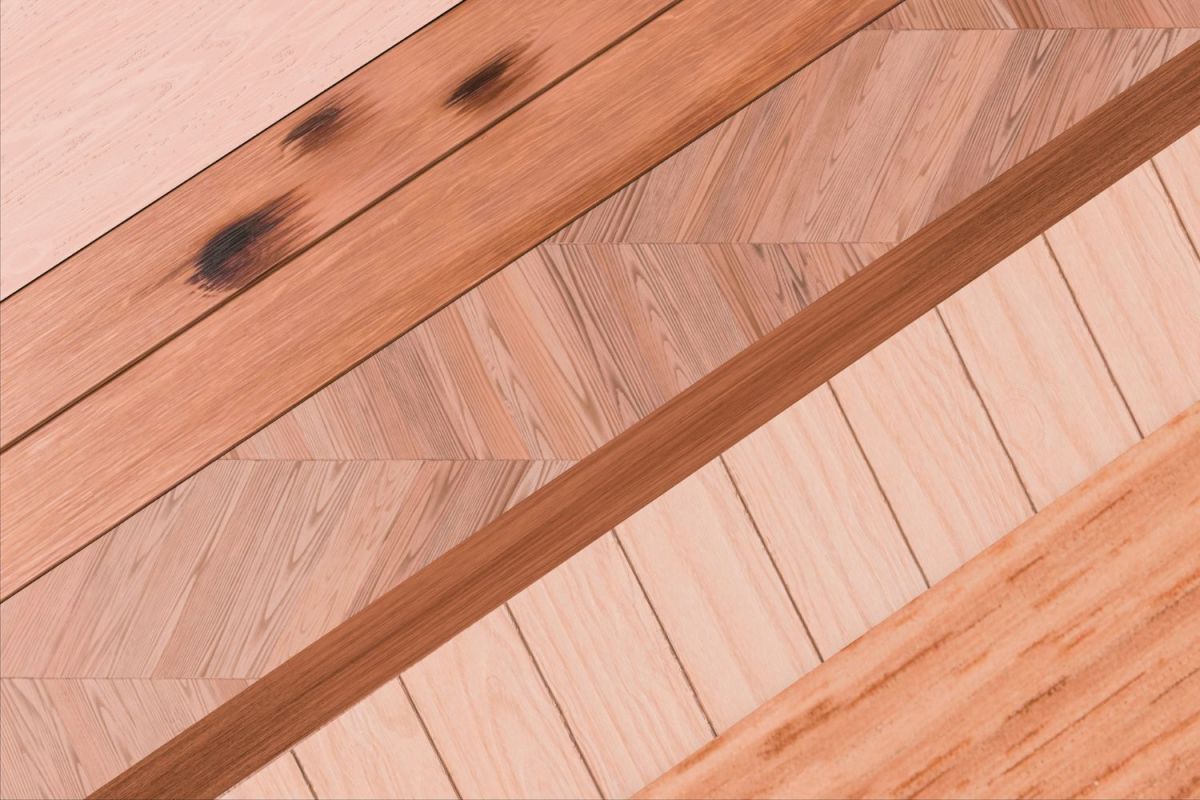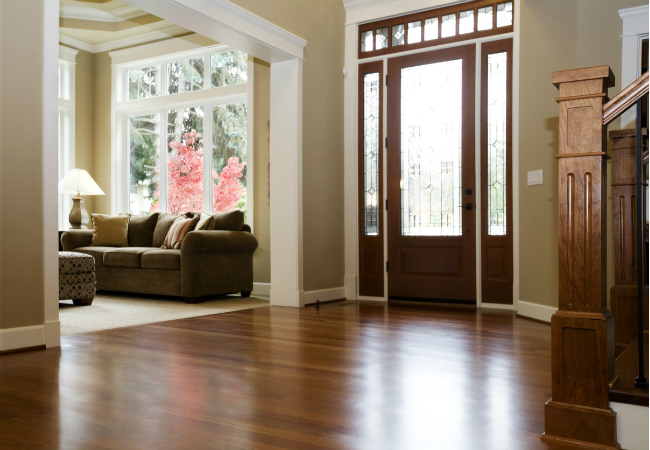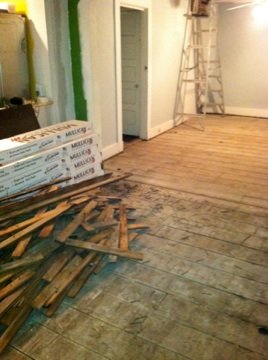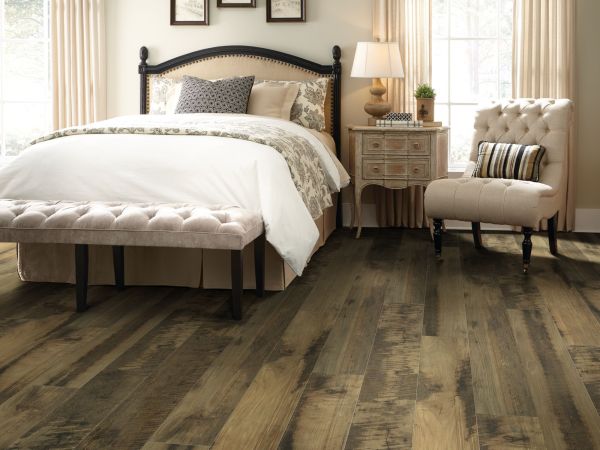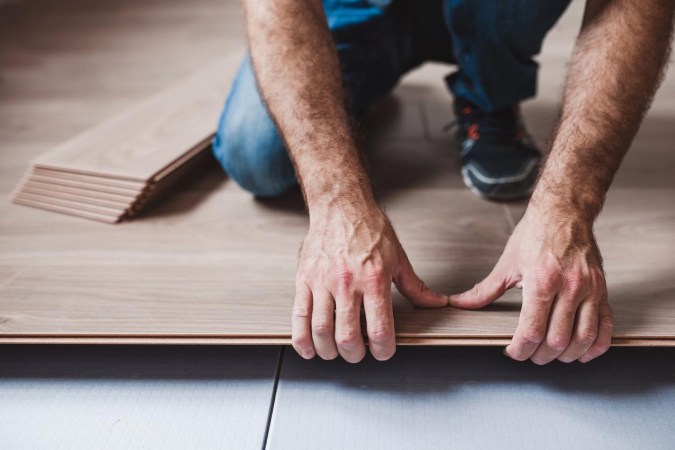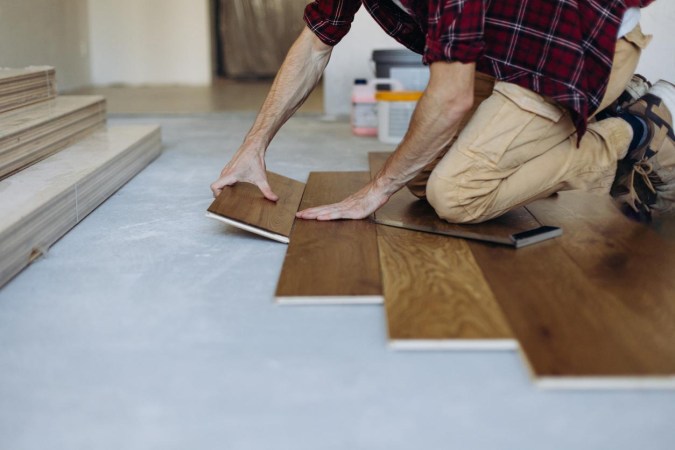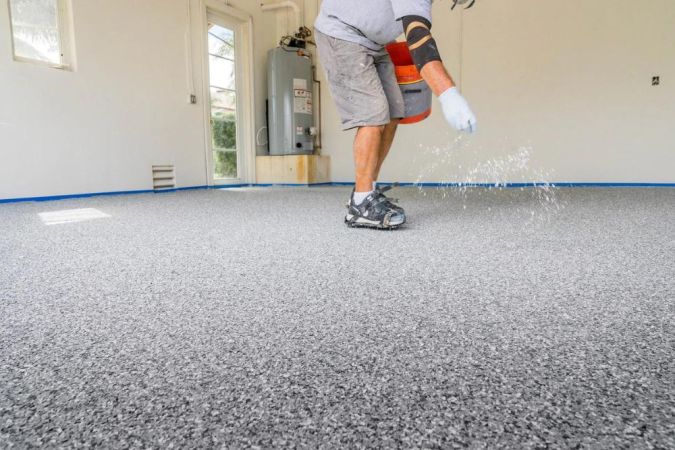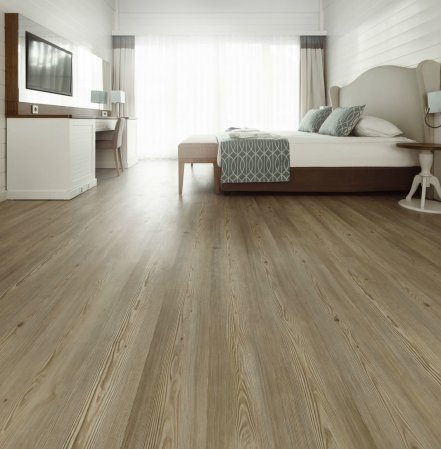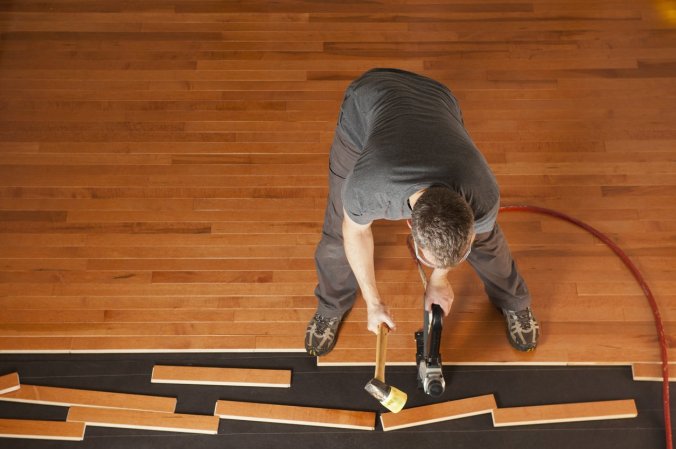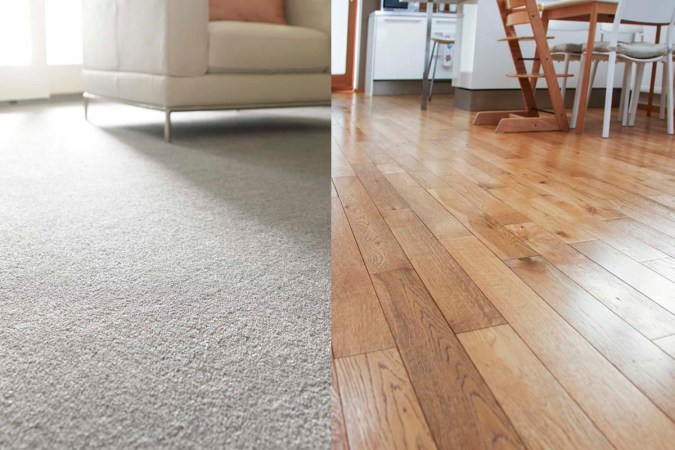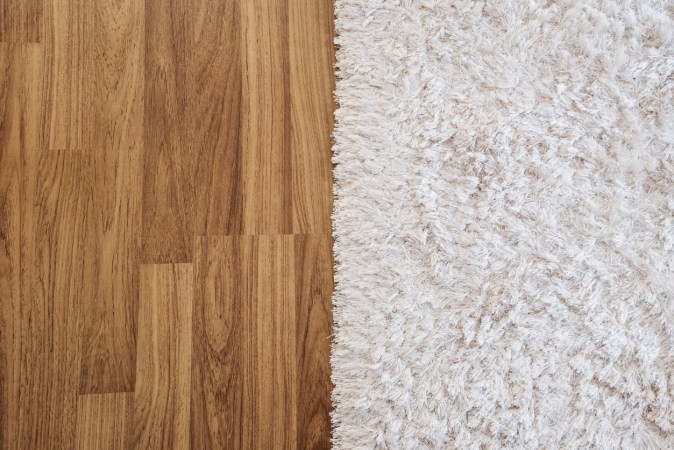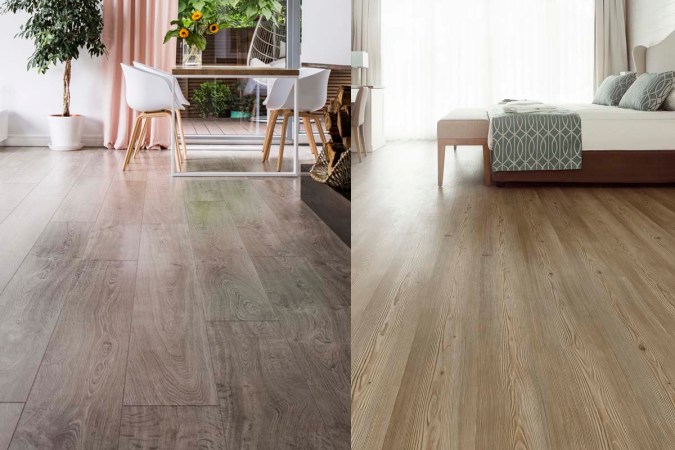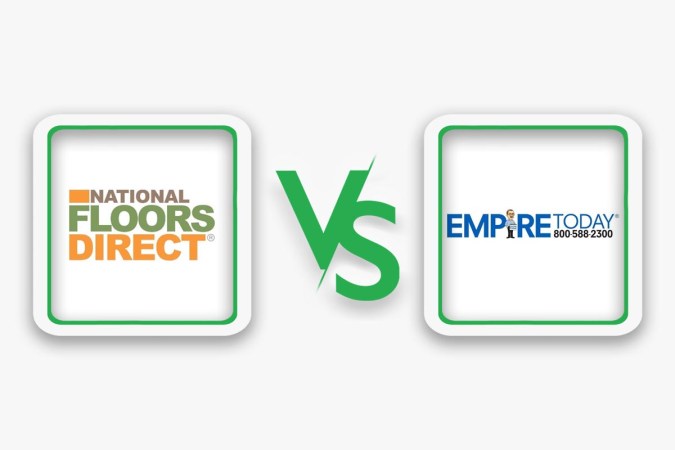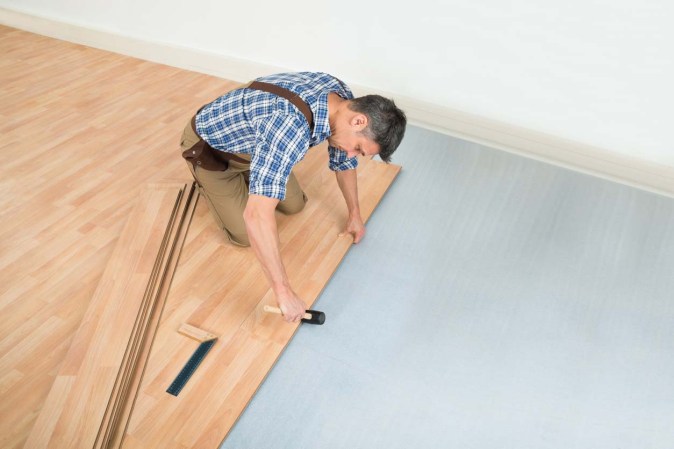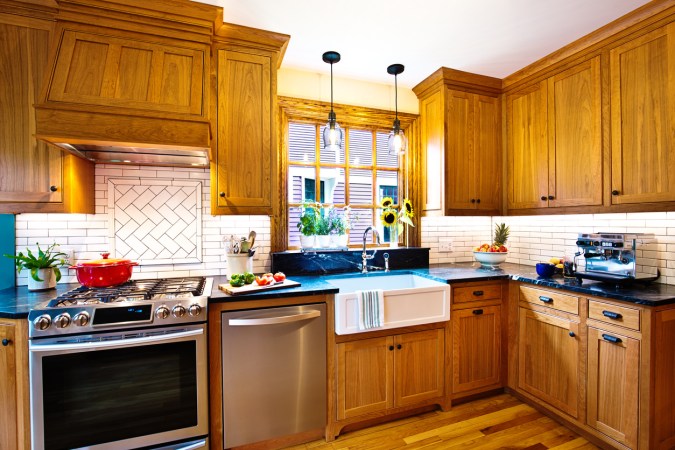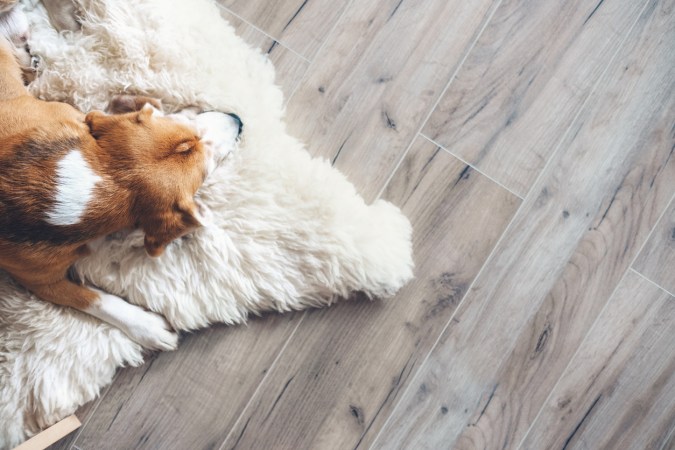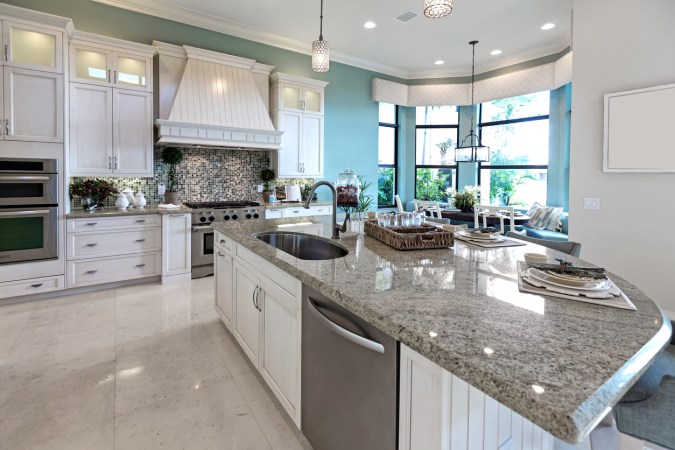We may earn revenue from the products available on this page and participate in affiliate programs. Learn More ›
During the planning stages of a home improvement project, homeowners will want to consider the cost of various wood materials for new flooring and furniture. Solid wood and engineered wood are two common options for homeowners who are choosing hardwood flooring materials. Known for its durability and timeless appeal, solid wood is a popular choice for many homeowners. Choosing solid wood floors for a home can increase the overall cost of the project, and the cost of solid wood can vary depending on the type of hardwood. While it’s true that solid wood is more expensive, the warmth and beauty of the material makes it an excellent choice for homeowners who want long-lasting, quality materials in their home.
Engineered wood floors are becoming increasingly popular due to their versatility and more budget-friendly pricing. Engineered hardwood floors and almost waterproof engineered wood flooring are some of the most popular options for incorporating this material into a modern home. According to Sean O’Rourke, national director of merchandising at Floor Coverings International, “Engineered hardwood is manufactured with 3, 5, or as many as 7 layers of a plywood substrate and topped with a veneer of a real wood species.” This makes it an affordable option for flooring.
“The top layer (the wear layer) is made of high-quality wood and the core material may be of the same species, a different species, or a composite material,” says Brett Miller, vice president of technical standards, training, and certification at the National Wood Flooring Association (NWFA). Engineered wood price can vary depending on the type of wood veneer, the availability, and the demand for the material. While both types of hardwood flooring are made from real wood, one of the major advantages of solid wood floors is that homeowners can sand and refinish a solid wood floor several times over its lifespan.
To get an accurate estimate of hardwood flooring cost or engineered wood vs. solid wood furniture cost, homeowners will want to consider the scope of the project and their budget. Solid wood has a more expensive up-front flooring installation cost, but it can be more cost-effective over time because of its durability. Engineered wood, on the other hand, offers a more budget-friendly solution while still offering quality materials. When it comes to solid wood vs. engineered wood cost, choosing one material over the other depends on a homeowner’s needs, project requirements, and overall budget.
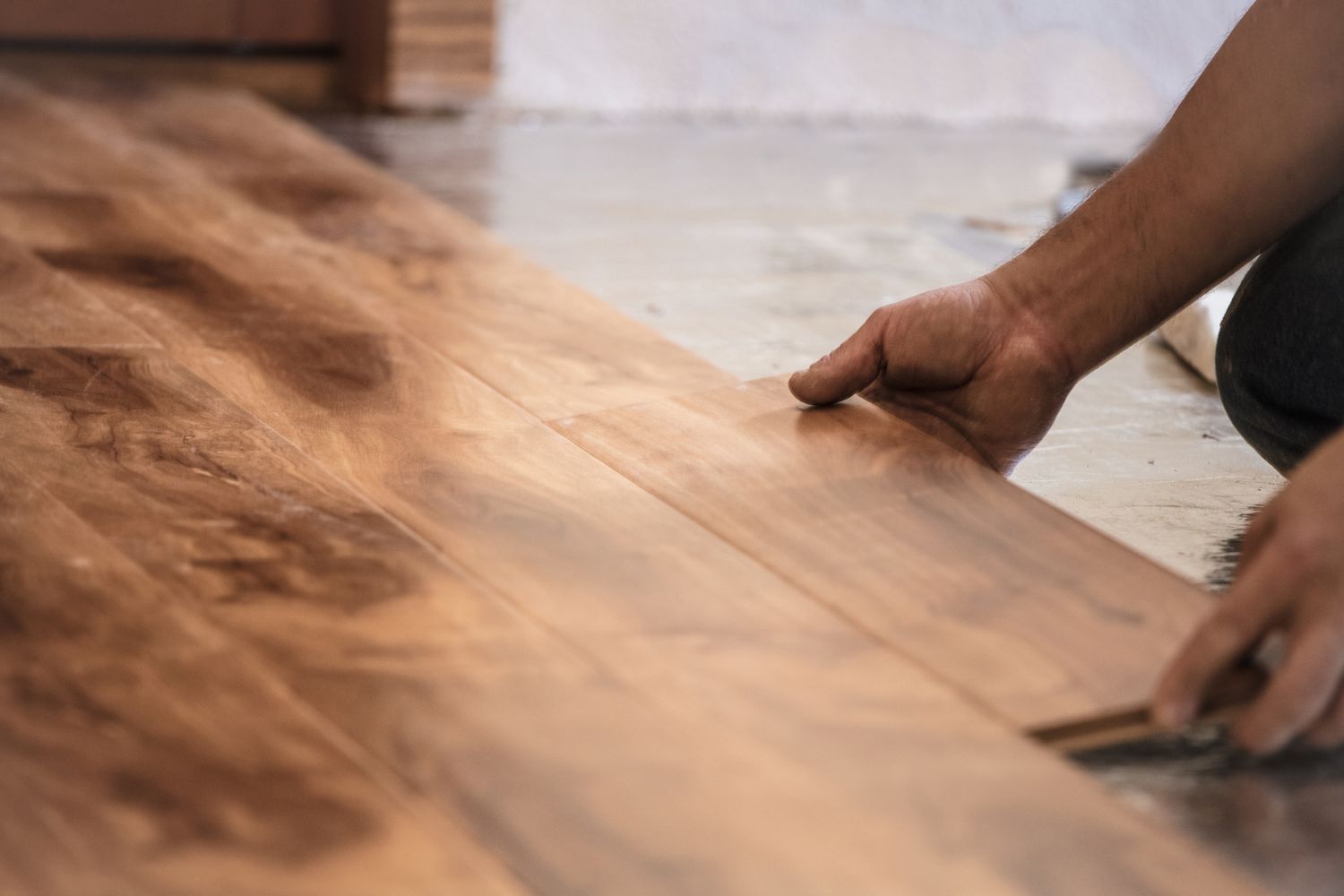
1. Hardwood flooring typically has a higher up-front cost than engineered wood flooring.
The difference in pricing between solid hardwood flooring and engineered wood flooring has to do with how each type of flooring material is constructed. Hardwood flooring is made from solid wood, usually maple, oak, ash, walnut, birch, or cherry. The high quality of the flooring planks contributes to the overall higher price, which falls between $8 and $15 per square foot. Hardwood planks are usually about ¾ of an inch thick, from 2¼ to 4 inches wide, and between 12 and 84 inches long.
The best engineered wood flooring is designed from layers of real wood veneer on top of quality plywood. This results in flooring that looks like solid hardwood, but at a more budget-friendly price point. Since the construction of this material doesn’t use all solid wood, the price is lower than for hardwood flooring, ranging from $4 to $7 per square foot. Engineered wood planks run from ⅜ to 9/16 of an inch thick, from 2¼ to 7 inches wide, and between 12 and 60 inches in length.
2. However, hardwood flooring can last longer than engineered flooring if properly cared for and maintained.
With the proper maintenance and care, hardwood flooring can last between 30 to 100 years, compared to 30 years on the higher end for engineered flooring. Its longevity makes it a popular choice for homeowners looking to upgrade their flooring. Understanding how to properly care for hardwood floors plays a significant role in how long the material lasts.
- Regular cleaning. Committing to a regular cleaning schedule by sweeping, vacuuming, and mopping is important to avoid scrapes and gouges in the surface.
- Use area rugs and furniture pads. Using area rugs in high-traffic areas can reduce visible wear and tear on the wood flooring. Affixing self-adhesive furniture pads on the bottom of dressers, beds, tables, and chairs can help reduce the risk of scratching the hardwood.
- Clean up spills promptly. Cleaning spills promptly and avoiding the use of excess water when mopping can prevent the warping of both hardwood and engineered wood flooring.
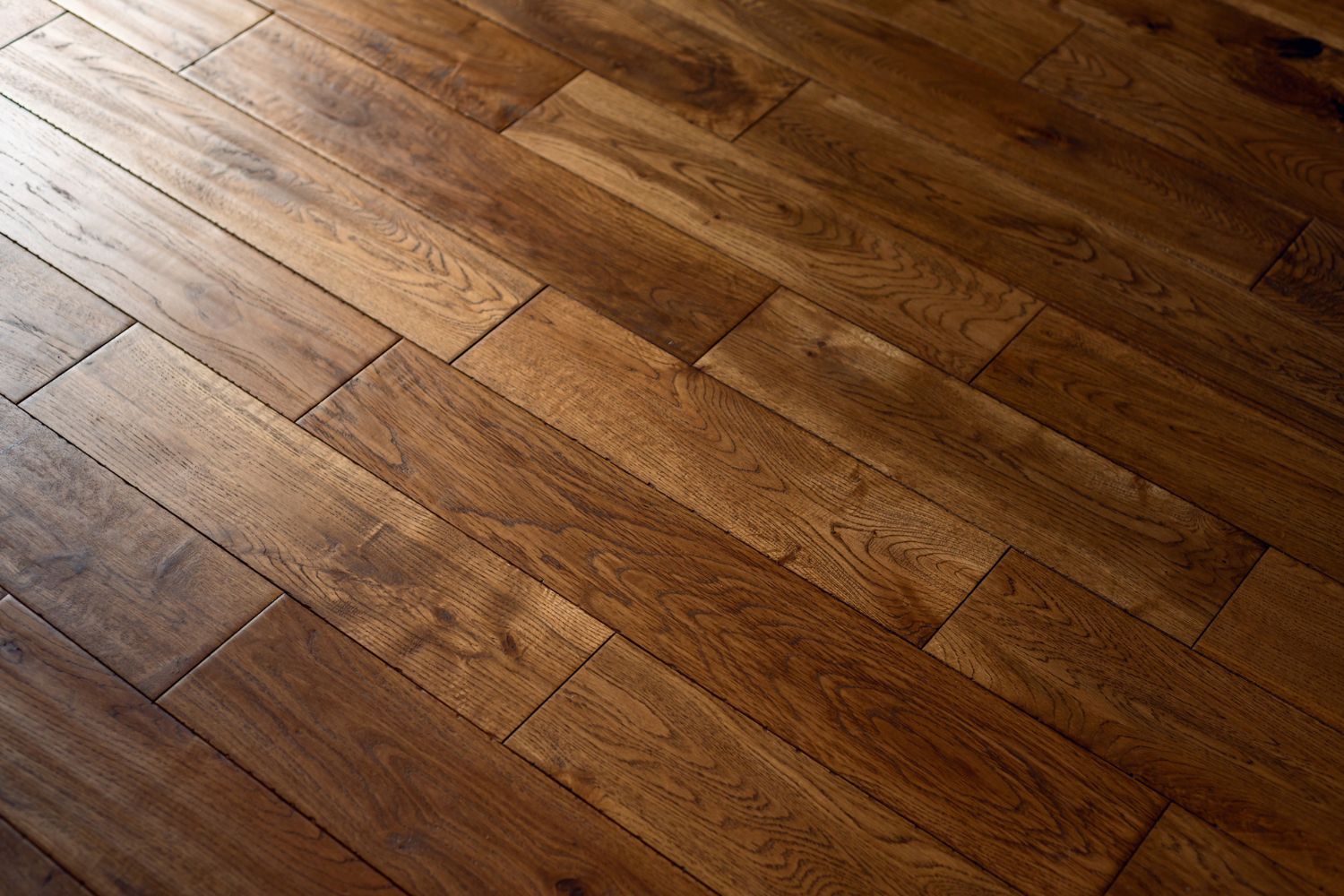
3. Hardwood flooring can also be refinished more times than engineered wood flooring, which is an additional cost but is typically cheaper than a full floor replacement.
Hardwood floors can develop dents, wear marks, or scratches as a result of normal use. Refinishing the floor can get rid of these surface blemishes and extend the lifespan of the wood. According to Miller, “Over time, when wood floors start to look a little dull, they can be renewed through recoating. This involves applying a new coat of wood floor finish, which the NWFA recommends doing every 3 to 5 years. Individual maintenance schedules will vary depending on use, wear and tear, and lifestyle.”
Sanding down the top layer of the floor by either renting a floor sander for a DIY project or hiring one of the best hardwood floor refinishing companies can allow the homeowner to refresh the floor at a lower cost than replacing the entire floor. The cost to refinish hardwood floors ranges from $1,098 to $2,653, with homeowners spending an average of $1,869. Homeowners can also choose from a variety of solid wood stain colors to match the overall decor of their home.
“Almost all engineered wood floors can be recoated, but not all engineered hardwood floors may be sanded and refinished,” explains Miller. “What differentiates one from another is the thickness of the topmost wear layer. The general rule of thumb is that the wear layer must be at least 2.5 mm (3/32 inches) thick in order to be a candidate for refinishing.”
Engineered flooring can be refinished, but the number of times it can be done depends on the thickness and quality of the wood veneer. This type of flooring will eventually need to be replaced when it can no longer be refinished due to the thinning of the veneer. “Typically, engineered hardwoods cannot be refinished, but the high-quality ones with a thick wear layer can be refinished,” explains O’Rourke.
4. Engineered wood flooring has a simpler installation process than hardwood flooring, so experienced DIYers may be able to save on labor costs by installing the flooring themselves.
Experienced DIYers can save on labor costs by installing the engineered wood flooring on their own. The overall time it takes to install engineered wood flooring depends on the type of engineered wood and the installation method. There are a few ways to install engineered wood floors: They can be installed with the same nail-down method that is used for solid hardwood floors, and floating floors can be installed with the click-lock method. Some engineered wood floors can be glued to a concrete subfloor with engineered wood floor glue. Click-lock or glue-down methods are typically easier for a DIY installation compared with the nail-down method. Due to the expertise required to install solid wood floors, many homeowners prefer to hire one of the best hardwood flooring installation companies (such as Empire Today or LL Flooring) to complete the job in a timely and professional manner.
Installation time depends on the type of prep that’s needed and whether the subfloor needs repairs or replacement. It’s important for the new engineered wood floor to sit in the room for a day or two to adjust to the temperature and humidity levels before installation to avoid warping or separating. The size of the floor also affects the overall installation time, with larger rooms and intricate flooring designs requiring more time. DIYers will want to take into account that having the proper tools and equipment can speed up the process of installing an engineered wood floor.
“The skill set and tools to install both are readily available either to purchase or rent but you definitely need some carpentry skills and manpower,” explains ORourke. “Flooring contractors and flooring retailers will have more knowledge and skill sets that will guarantee your investment is installed correctly. Much like changing the oil and filters on your car; if you take it to a dealer, it will be done correctly and in about a third of the time.”
Miller leans toward recommending professional installation for either option. “Installing hardwood floors is a lot more complicated than painting your walls or replacing the hardware on your kitchen cabinets, so it is not recommended as a DIY project,” he explains. “You’ll want a certified wood flooring professional who has the knowledge and skills to do the job right. In the long run, you’ll save money and time by using a professional.” However, homeowners with experience installing flooring will likely be able to tackle this project themselves.
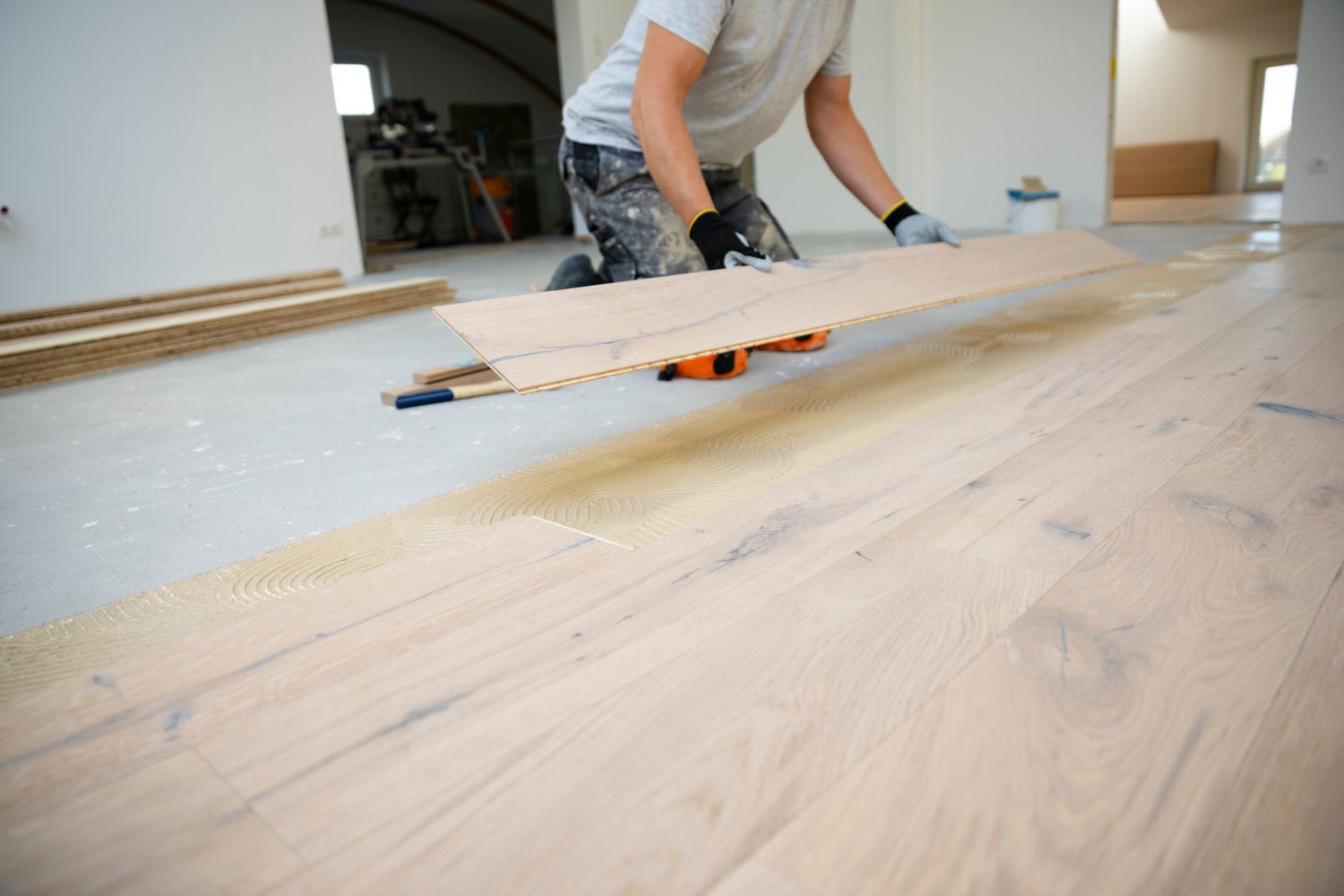
5. In addition to its lower initial cost, engineered wood flooring is more resistant to warping than hardwood in humid and damp conditions, which can translate to lower repair costs.
Engineered wood flooring is more resistant to moisture and humidity, which can cause warping and buckling, but it’s not completely waterproof. The construction of engineered wood planks involves treating the top layer with protective finishes that provide resistance to moisture, but spills need to be cleaned up immediately to avoid warping, swelling, or separating the layers of veneer.
For regions that experience high levels of humidity or rooms that have higher moisture levels, solid wood flooring isn’t recommended since it can warp in damp conditions. Engineered wood is recommended as a better choice for basements, kitchens, and other areas that experience elevated levels of moisture. “Engineered wood flooring is very dimensionally stable, as it contracts and expands less than solid wood when there are fluctuations in humidity and temperature,” explains Miller.
6. Solid hardwood flooring may have a higher return on investment (ROI), which could help homeowners secure a higher selling price for their home.
Installing hardwood floors can increase the overall value and marketability of a home. This can result in a higher return on investment when the time comes to put the house on the market. Solid hardwood flooring is commonly thought of as a high-end flooring option, which makes it more attractive to potential home buyers, and the longevity and durability of the material is often a significant selling point. Buyers may be willing to pay more for a home with solid hardwood floors than for one that has different flooring materials. The precise ROI for a home with solid wood floors can vary depending on the local real estate market and the demand for homes with hardwood floors, as well as the quality and condition of the flooring.
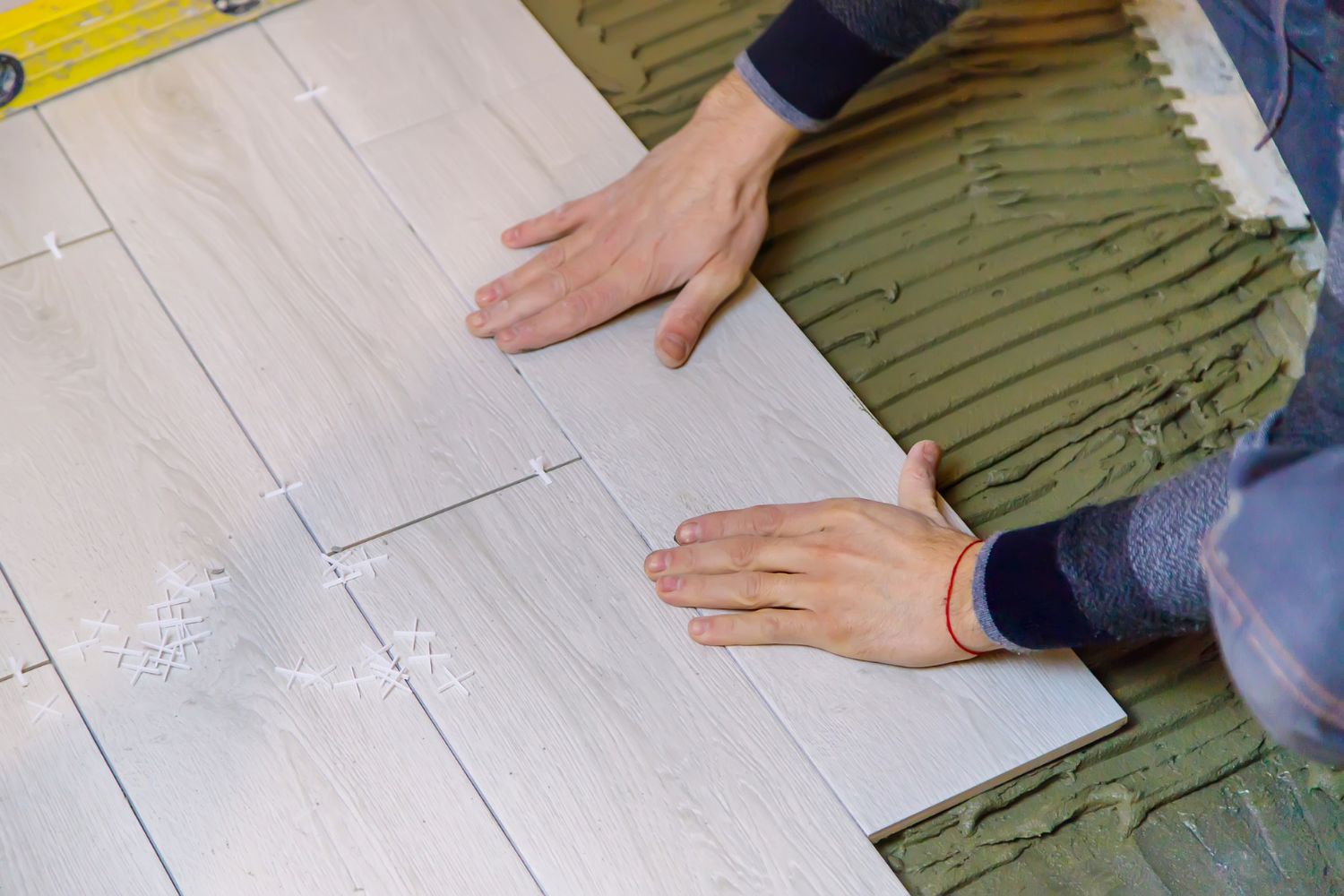
7. Ultimately, homeowners will want to decide which flooring option best suits their design preferences as well as their budget.
When the time comes to upgrade the flooring in their home, homeowners will compare various options, including carpet vs. hardwood cost and solid wood vs. engineered wood cost. Homeowners will want to consider what type of flooring style they want in their home along with their budget when choosing between solid wood and engineered wood flooring. Since both types of flooring materials look virtually the same at first glance, the difference comes down to the construction and the price of the materials.
I have been in the flooring industry for almost 35 years and I will always recommend a good quality engineered hardwood,” says O’Rourke. “Engineered hardwood lasts as long as solid hardwood, and you won’t get any gaps or cupping which is an inherent problem with wider solid hardwoods. Most consumers today like the wider widths so stick to engineered, plus they are less expensive than the alternative in solid.”
Miller agrees to some extent. “Both solid and engineered wood floors are made of real wood and may be installed in any room that is on or above ground in a home,” he says. “Engineered wood flooring is ideal for being installed in a basement. You would want to consider that while engineered wood flooring can sometimes be sanded and refinished, it cannot always be done as many times as solid wood flooring.”
Engineered wood is more cost-effective than solid wood. If a homeowner has a limited budget, engineered wood is an excellent option for a flooring installation project. It’s also more resistant to moisture and humidity. Engineered wood is available in a variety of styles and wood species that can match any home’s decor. For homeowners who are interested in a DIY installation project, engineered wood is typically easier to install than a solid wood floor.
Sources: Forbes

